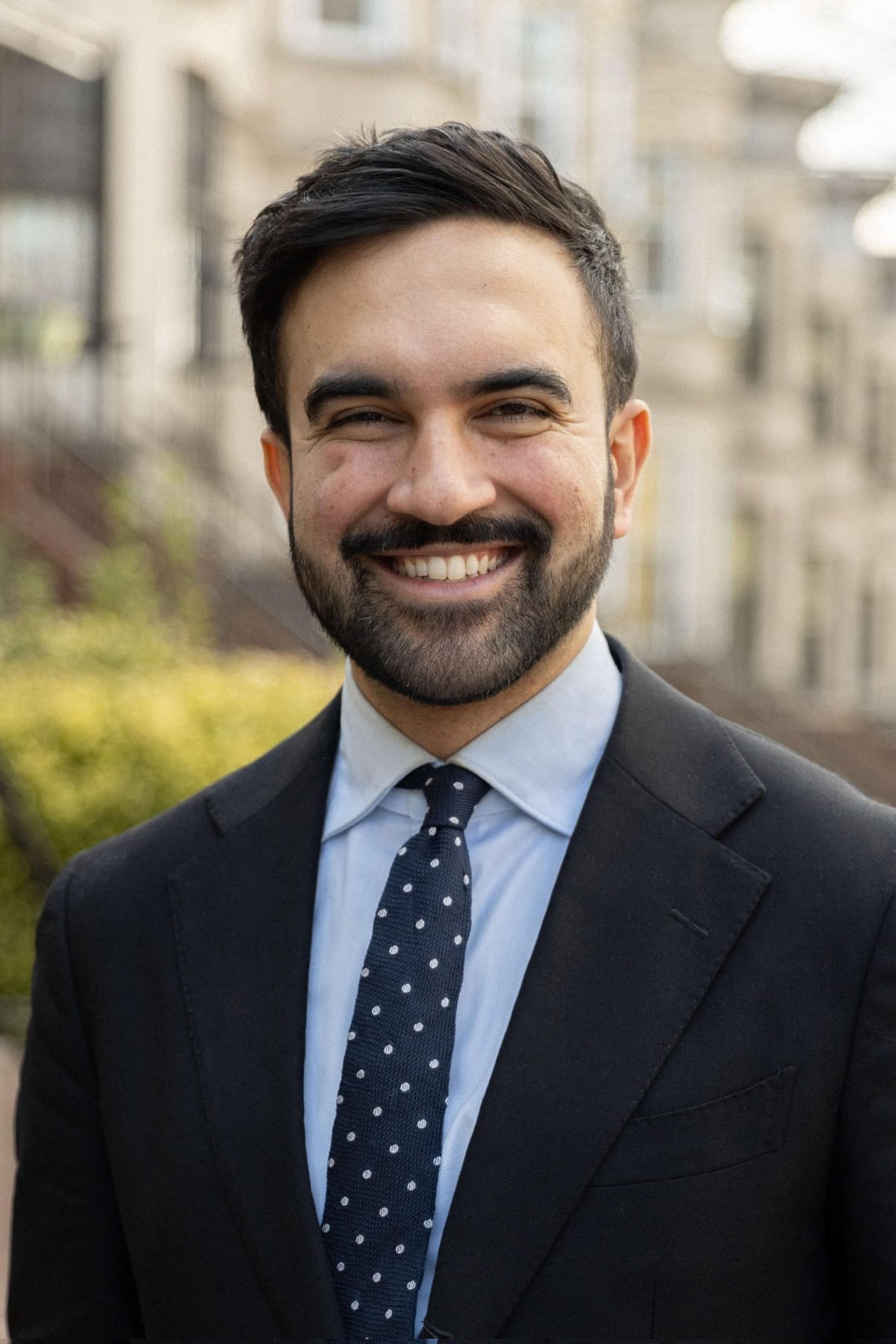In a stunning upset that has reverberated across New York City and beyond, Zohran Mamdani, a 33-year-old state assemblyman and self-described democratic socialist, has officially won the Democratic mayoral primary, defeating former Governor Andrew Cuomo. The final ranked-choice voting count, certified in early July 2025, cemented Mamdani’s victory, marking a seismic shift in the city’s political landscape. This article explores Mamdani’s remarkable rise, the dynamics of the primary, the implications of his win, and what it means for New York City as it heads toward the general election on November 4, 2025.
---
A Historic Upset in the Democratic Primary
On June 24, 2025, New York City’s Democratic primary for mayor captivated national attention as a battleground for the soul of the Democratic Party. Zohran Mamdani, a relatively unknown state assemblyman from Queens, emerged as the frontrunner against Andrew Cuomo, a political heavyweight with decades of experience and deep ties to the Democratic establishment. The Associated Press called the race for Mamdani after former Governor Cuomo conceded, acknowledging the young progressive’s commanding lead in the first round of ranked-choice voting.
With 93% of votes counted in the initial round, Mamdani secured 43.5% of first-choice ballots, compared to Cuomo’s 36.4%. Brad Lander, the city comptroller and another progressive candidate, trailed with 11.4%. New York City’s ranked-choice voting system, which allows voters to rank up to five candidates in order of preference, played a pivotal role in the outcome. Mamdani’s cross-endorsement with Lander, where each listed the other as their second choice, likely bolstered his lead as votes were redistributed.
Cuomo, who had been the frontrunner for much of the campaign, conceded on June 24, 2025, stating, “Tonight was not our night. Tonight was Assemblyman Mamdani’s night, and he put together a great campaign.” While Cuomo left open the possibility of running as an independent in the general election, Mamdani’s victory positions him as the likely favorite in a city where Democrats hold a significant advantage.
---
Who is Zohran Mamdani?
Zohran Mamdani’s rise from a little-known state legislator to the Democratic nominee for mayor of New York City is nothing short of extraordinary. Born in Kampala, Uganda, to parents of Indian descent, Mamdani moved to New York City at the age of seven. His background as a Muslim and South Asian immigrant has resonated deeply with many New Yorkers, particularly in diverse communities across Queens and beyond. If elected in November, Mamdani would become the city’s first Muslim and Indian American mayor, a historic milestone for a metropolis known for its cultural diversity.
Mamdani’s journey into politics was shaped by his work as a foreclosure prevention housing counselor in Queens, where he witnessed firsthand the struggles of working-class families facing eviction. This experience fueled his commitment to addressing the city’s affordability crisis, a cornerstone of his campaign. Elected to the New York State Assembly in 2020, Mamdani quickly established himself as a bold progressive voice, advocating for policies like rent stabilization and tenant protections.
His campaign for mayor was marked by an unrelenting focus on affordability and accessibility. Mamdani’s platform included ambitious proposals such as freezing rents on stabilized apartments, making city buses free, providing universal childcare, and creating city-run grocery stores to address food insecurity. While critics dismissed these ideas as “pie-in-the-sky,” they resonated with voters frustrated by the rising costs of living in one of the world’s most expensive cities.
---
The Campaign: Grassroots Momentum vs. Establishment Power
The 2025 Democratic mayoral primary was a clash of ideologies, pitting Mamdani’s progressive vision against Cuomo’s centrist, experience-driven campaign. Cuomo, who resigned as governor in 2021 amid allegations of sexual harassment, framed himself as a seasoned leader capable of restoring order to a city grappling with crime, affordability, and political dysfunction under incumbent Mayor Eric Adams. Backed by deep-pocketed donors, prominent unions, and endorsements from figures like former President Bill Clinton, Cuomo’s campaign relied on traditional political machinery.
Mamdani, by contrast, leaned heavily on grassroots support, mobilizing an unprecedented 50,000 volunteers and breaking fundraising records with small-donor contributions. His social media savvy, including viral videos and a widely publicized walk across Manhattan, helped him connect with younger voters and communities often overlooked by traditional campaigns. Endorsements from progressive heavyweights like Senator Bernie Sanders and Representative Alexandria Ocasio-Cortez further amplified his message.
The campaign was not without controversy. Mamdani’s vocal criticism of Israel’s actions in Gaza and his support for the Boycott, Divestment, and Sanctions (BDS) movement drew backlash from some Jewish leaders in a city with a significant Jewish population. However, his outreach to South Asian, Muslim, and Latino communities, including campaign materials in Urdu and Spanish, broadened his coalition.
Cuomo’s campaign, meanwhile, faced challenges due to his past scandals and perceptions of being out of touch with the city’s younger, more diverse electorate. Super PACs supporting Cuomo spent millions on attack ads accusing Mamdani of being too radical, but these efforts backfired, as voters appeared to embrace Mamdani’s optimistic, forward-looking message.
---
The Role of Ranked-Choice Voting
New York City’s ranked-choice voting system, implemented for the second time in a mayoral primary, played a critical role in Mamdani’s victory. Under this system, voters rank up to five candidates, and if no candidate achieves a 50% majority in the first round, the candidate with the fewest votes is eliminated, and their votes are redistributed based on voters’ second choices. This process continues until a candidate surpasses 50%.
Mamdani’s alliance with Brad Lander proved strategic, as their cross-endorsement ensured that many of Lander’s voters ranked Mamdani as their second choice. Preliminary results suggested that Mamdani’s lead would only grow as ranked-choice votes were tallied, prompting Cuomo’s early concession. The final count, completed in early July 2025, confirmed Mamdani’s victory, with the New York City Board of Elections reporting that he surpassed the 50% threshold after several rounds.
---
Implications for New York City and the Democratic Party
Mamdani’s win is a watershed moment for New York City and the Democratic Party at large. His victory signals a generational and ideological shift, as younger, more progressive voters demand bold solutions to systemic issues like housing, childcare, and economic inequality. The defeat of Cuomo, a symbol of the Democratic establishment, has sparked intense debate about the party’s future, especially as it seeks to counter President Donald Trump’s second term.
For New Yorkers, Mamdani’s platform promises transformative change. His proposal to freeze rents on stabilized apartments could benefit over one million tenants, though critics argue it may exacerbate the city’s housing shortage. Free buses and universal childcare aim to alleviate financial burdens for working families, while city-run grocery stores seek to address food deserts in underserved neighborhoods. However, implementing these policies will require navigating a complex web of state and city regulations, as well as securing funding through tax increases on the wealthy—a proposal likely to face resistance from Governor Kathy Hochul and the state legislature.
Nationally, Mamdani’s victory is seen as a rebuke to the Democratic Party’s centrist wing. Progressive leaders like Ocasio-Cortez and Sanders have hailed his win as a model for grassroots campaigns, while establishment figures like Senate Majority Leader Chuck Schumer and House Democratic Leader Hakeem Jeffries have offered cautious support. The primary exposed deep divisions within the party, with some Democrats, including business leaders and moderates, expressing concern about Mamdani’s left-leaning agenda.
---
The Road to November: Challenges and Opportunities
While Mamdani is the frontrunner in the heavily Democratic city, the general election on November 4, 2025, presents challenges. Incumbent Mayor Eric Adams, running as an independent after bypassing the Democratic primary, remains a formidable opponent despite his unpopularity and legal troubles. Andrew Cuomo has also hinted at a potential independent run, which could split the Democratic vote. Republican nominee Curtis Sliwa, who lost decisively in 2021, is expected to struggle in a city where Democrats outnumber Republicans six to one.
Mamdani’s ability to unite the Democratic coalition will be critical. His campaign has already begun reaching out to moderate voters, emphasizing his commitment to affordability and safety for all New Yorkers. However, opposition from business leaders and real estate interests, who view his policies as anti-growth, could pose a significant hurdle. Some, like X CEO Linda Yaccarino and hedge fund executive Whitney Tilson, have vowed to back Adams or another candidate to “save New York” from Mamdani’s progressive agenda.
On the other hand, Mamdani’s diverse coalition—spanning young voters, South Asian and Muslim communities, and working-class neighborhoods—gives him a strong base. His ability to mobilize nearly one million voters in the primary, a significant increase from 2021, underscores his appeal and the potential for high turnout in November.
---
A Vision for a New New York
Mamdani’s campaign has been defined by a vision of a more equitable and accessible New York City. In his victory speech, he quoted Nelson Mandela, saying, “It always seems impossible until it’s done. My friends, we have done it.” He promised to be a mayor for all New Yorkers, regardless of whether they voted for him, and to fight for a city that is affordable, safe, and inclusive.
His policy priorities reflect this vision. By focusing on affordability, Mamdani aims to address the stark inequalities that define life in New York. His proposal for city-run grocery stores, for example, responds to the 500,000 children who go to bed hungry each night. Free buses and childcare aim to make daily life more manageable for working families, while rent freezes seek to protect tenants from skyrocketing costs.
Critics, including The New York Times editorial board, have argued that Mamdani’s agenda ignores the trade-offs of governance, such as the potential impact of rent freezes on housing supply. Others question his experience, noting that managing a city with a $115 billion budget and over 300,000 municipal workers requires seasoned leadership. Mamdani counters that his fresh perspective and commitment to working people make him uniquely suited to lead.
---
A New Chapter for New York City
Zohran Mamdani’s victory in the Democratic mayoral primary is a testament to the power of grassroots organizing and the hunger for change among New Yorkers. His defeat of Andrew Cuomo, a political titan, underscores the shifting priorities of the electorate and the Democratic Party. As Mamdani prepares for the general election, he carries the hopes of a diverse coalition seeking a city that works for everyone, not just the wealthy.
Whether he can translate his progressive vision into actionable policies remains to be seen. The challenges of governing New York City are immense, from navigating state politics to addressing crime, education, and infrastructure. Yet Mamdani’s campaign has already redefined what is possible, proving that a 33-year-old outsider can topple the establishment and inspire a new generation of voters.
As New York City looks toward November, Mamdani’s message of hope, affordability, and inclusion will face its ultimate test. For now, his primary win stands as a historic moment—one that could shape the future of the nation’s largest city and the Democratic Party for years to come.
Zohran Mamdani’s Historic Victory in New York City’s Democratic Mayoral Primary: A New Era for the Big Apple
With 93% of votes counted in the initial round, Mamdani secured 43.5% of first-choice ballots, compared to Cuomo’s 36.4%. Brad Lander, the city comptroller and another progressive candidate, trailed with 11.4%.


